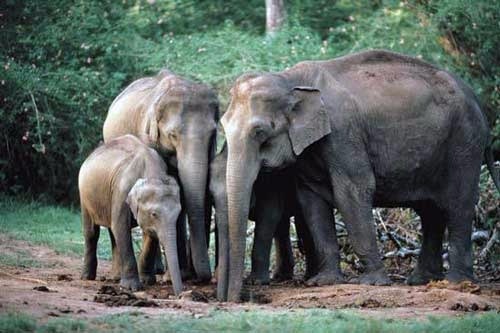
Sumatran elephant (Elephas maximus sumatranus)is the only sub-species of Asian elephants that is critically endangered. Since year 2011 to 2017, as many as 150 Sumatran elephants were killed in conflict with man. But the biggest threat to this elephant is actually the land conversion that has narrowed their habitat. It is estimated currently there are only, 1,700 elephants left that are spread in Aceh, Lampung, Jambi, and South Sumatera.
To increase awareness and population of Sumatran elephants, UGM’s Faculty of Veterinary Medicine lecturers, Dr. drh. Wisnu Nurcahyo as well as drh. Muhammad Tauhid Nursalim, M.Sc, and drh. Muhammad Wahyu from Veterinary Society for Sumatran Wildlife Conservation (Vesswic) have formed a consortium – funded by USAID/TFCA – to support government policy aiming at increasing the population by 10% in 2019.
Wisnu Nurcahyo said currently they were compiling a guide book for mahout to support elephant breeding programme and guide book for veterinarians on elephant healthcare. “We also collected input from stakeholders for elephant conservation,” he said to journalists on Monday (29/1). The stakeholders are Indonesian Veterinarians Association (PDHI), Conservation Forum of Indonesian Elephants (FKGI), and Forum of Indonesian Mahouts (FOKMAS), Gembira Loka Zoo, and PT. Taman Wisata Candi Borobudur (TWC).
Chairman of PDHI, Dr. drh. Heru Setijanto, said to support conservation and increase of elephant population, it needs capacity enhancement of veterinarians and mahout in terms of conservation medic, especially in health, regular treatment, or breeding.
Representatives from Gembira Loka Zoo and PT. TWC expressed their commitment to supporting the bid to increase the population of Sumatran elephants.
Meanwhile, Secretary of FKGI, Donny Gunaryadi, said conflict between elephants and humans had caused injuries and fatality of elephants, thus the role of veterinarians and mahout is required to deal with this condition.
Donny said currently it was predicted there were 1,700 Sumatran elephants left in the Sumatran forests. In the past decade, said Donny, some 700 elephants were estimated to have been killed through poaching. “It is known that some 150 elephants have been hunted, poisoned, and tusks removed,” he said.
Donny mentioned in year 1985 there were 44 areas of elephant habitat across Sumatera. But until 2007, there were only 25 areas, of this number as few as 12 have population higher than 50 elephants. A few of elephant habitats are Leuser National Park and Ulu Masen in Aceh, Bukit Tiga Puluh and Tesso Nilo National Parks in Jambi, Padang Sugihan, South Sumatera, Way Kambas and Bukit Barisan Selatan in Lampung.
Lecturer drh. Muhammad Tauhid Nursalim said the decrease of elephant population was also due to development policy in Regional Spatial Planning that does not take side with conservation efforts. Even roads and other facilities construction often tresspass the area of National Parks, thereby intruding elephant habitat.
“So, central and regional governments need to pay attention to the elephant conservation,” he said.

